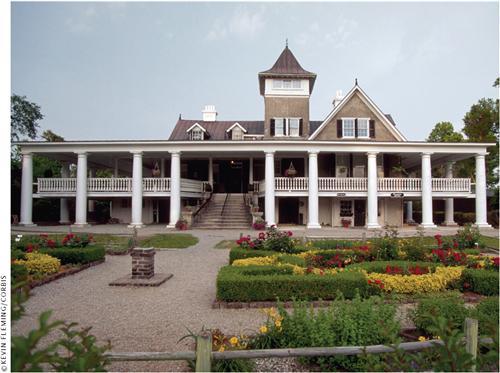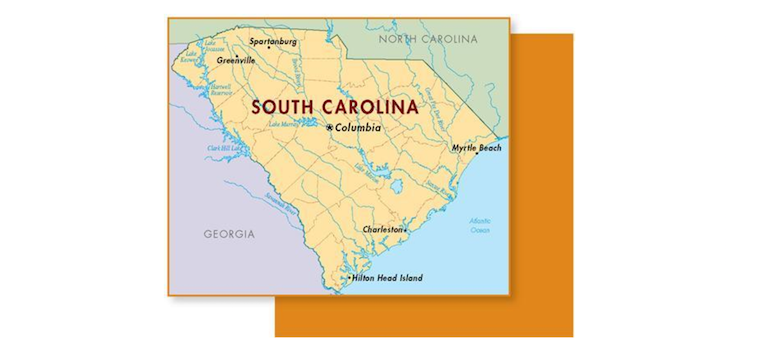Sign up for the Family Tree Newsletter Plus, you’ll receive our 10 Essential Genealogy Research Forms PDF as a special thank you!
Get Your Free Genealogy Forms
"*" indicates required fields
If South Carolina genealogists had an official dance, it would be the Charleston. Not simply because its quick-stepping choreography originated in the Palmetto State’s oldest city. When you have 500 years’ worth of family tree records to explore, who wouldn’t want to kick up their heels?
Whether your clan arrived during the days of Colonial settlement or that Roaring ’20s dance craze, you’ll have a swingin’ time tracing your own South Carolina ancestry. Just follow our genealogical lead, and you’ll find your family right on cue.
Stepping into the past
Spanish explorers first established a foothold in Carolina in 1514; soon after, France and England began eyeing the territory with envy. What did those expanding European powers covet? Carolina’s four unique geographic areas: the Coastal Plains, a flat area near Charleston; Sand Hills, a spot just west of the Coastal Plains; Piedmont, the hilly region close to Columbia; and Upcountry, an escarpment of the Blue Ridge Mountains.
In 1587, Spanish forces withdrew from the area, and by 1670 the English had founded a colony at Albemarle Point — dubbed Charles Town in honor of King Charles II. England attracted immigrants to its new province by renting land for a half-penny per acre.
The province split into North and South Carolina in 1712. To entice new settlers, the English gave monetary incentives to importers of healthy British servants between ages 12 and 30. Other early settlers included Germans, Scottish religious dissenters, descendants of French Huguenots and a few Dutch from New York. South Carolina also attracted people from another British colony — Barbados. Their influence gave rise to an early South Carolina economy that resembled the plantation system of the West Indies: Rice and indigo crops, cultivated by slave labor, dominated the economy initially; later on, cotton, tobacco and soybeans became important crops.
After South Carolina became an official royal colony in 1729, the English again encouraged settlement, this time offering free rent to families who planted 50 acres of land. During the Revolutionary War, farmers from Scotland, Germany and Wales poured into the Piedmont and Upcountry regions and started small farms. In 1804, a general invitation went out to immigrant merchants to come to Charleston.
South Carolina’s population numbered nearly 250,000 in the 1790 federal census — almost half were slaves. In fact, during the height of the slave trade, about 40 percent of Africans forcibly shipped to North America arrived in South Carolina. By the 1820s, slaves made up a majority of the state’s population. To trace them, check the South Carolina Department of Archives and History (see resources) for wills and estate papers and inventories — many of which identify slaves by name or description. You can search a database of transcribed wills online at <www.archivesindex.sc.gov/search>.
Dancing to documents
Now that you understand South Carolina’s history, it’s time to track down your ancestors in Palmetto State records.
• Immigration: From early settlers to later arrivals, most South Carolina immigrants entered through Charleston. You can find transcriptions of a few Colonial passenger lists online at <sciway3.net/proctor/state/SC_ships.html>. Fragments of Charleston’s customs lists from 1820 (when the federal government began recording immigrants) to 1829 have survived, as have early lists for Georgetown and Beaufort. These lists are kept at the state archives. Charleston has passenger lists from 1890 to 1924.
Look for these immigration records on microfilm at the National Archives and Records Administration (NARA) <archives.gov>, its regional facilities, the Church of Jesus Christ of Latter-day Saints’ Family History Library (FHL) <www.familysearch.org> and its branch Family History Centers (FHCs).
Some are online at the subscription site Ancestry.com <Ancestry.com >.
• Military: South Carolina played a pivotal role in the Revolutionary War. British loyalists and American patriots waged more than 200 skirmishes in the state, including two battles that served as turning points in the war: Kings Mountain and Cowpens.
In the decades that followed, South Carolinians’ belief in states’ rights became a point of contention with other states — and in 1860, the Palmetto State was the first to secede from the Union. The first shots of the Civil War were fired in Charleston Harbor April 12, 1861, forcing Union soldiers to surrender Fort Sumter. In 1865, Gen. William Sherman led his march to the sea, burning most of South Carolina’s capital city, Columbia, and ruining the state’s economy along the way.
You can find records for your military ancestors at NARA, Ancestry.com and South Carolinians in the Military <sciway3.net/proctor/state/sc_military.html>. For service and pension records of Confederate soldiers, you can check with the state archives or in the FHL’s Confederate service records index, or search the Civil War Soldiers and Sailors System <www.itd.nps.gov/cwss>.
• Vital: Despite the state’s deep roots, South Carolina didn’t require state-wide birth and death registration until 1915. Statewide marriage records start in 1950 and divorces in 1962 (divorce was illegal until 1949).
For $12, you may obtain a certified copy of a birth certificate for deceased immediate family members at the Division of Vital Records (see resources) or county courthouses. Your request must include an original certified copy of a death record. You can get marriage and death records from the Division of Vital Records, too.
Large cities kept some earlier vital records. For example, you can find Charleston birth records from 1877 to 1901 and death records from 1821 to 1886 at the FHL. To access other towns’ vital records, contact the appropriate county or city health department. The state archives houses marriage records spanning the 1760s to the late 1800s. Probate courts and churches recorded other early marriages.
To locate church records, first try the FHL (which has many on microfilm) and the South Carolina Historical Society (see resources). If you strike out with those sources, you’ll need to contact the denomination’s regional repository or the local church. Baptists, Methodists and Presbyterians were South Carolina’s predominant 19th-century religious groups; the state was also home to Huguenots, Quakers and Anglicans (Episcopalians).
For more information on vital and church records at the state archives, go to <www.state.sc.us/scdah/vit.htm>.
• Census: Federal census records of the Palmetto State begin with the country’s first head count, 1790. Although most of the 1890 US census burned, roughly half of the supplemental schedules enumerating Civil War veterans and widows survived — including South Carolina’s. You’ll find US censuses on microfilm at the state archives, NARA and its regional facilities, the FHL and FHCs. They’re online at Ancestry.com, Genealogy.com <genealogy.com> (by subscription) and HeritageQuest Online <www.heritagequestonline.com> (free via subscribing libraries).
No Colonial censuses have survived, but South Carolina took several state censuses — the state archives has data for a few districts for 1829 and 1839, plus 1868 agricultural returns, 1869 population returns and both types for 1875. An 1848 Charleston city census is on microfilm at the FHL.
• Land: Between 1670 and 1719, the lords proprietors (sent by the King of England) issued and recorded land grants. After 1719, each province’s secretary recorded land grants and a public register kept track of deeds. Counties recorded deeds after 1785. Original state land grants from 1784 to 1882 and land plats from 1731 to 1861 are on microfilm at the FHL and the state archives. Remember that the boundaries between North and South Carolina weren’t always clearly defined, so if your family lived near the border, either state might hold their land records.
Now that you’re in step with South Carolina records, it won’t take long to master the research moves. Soon you’ll be dancing up and down the aisles of the Palmetto State’s repositories, on your way to discovering your kin.
From the June 2006 issue of Family Tree Magazine.
ADVERTISEMENT


